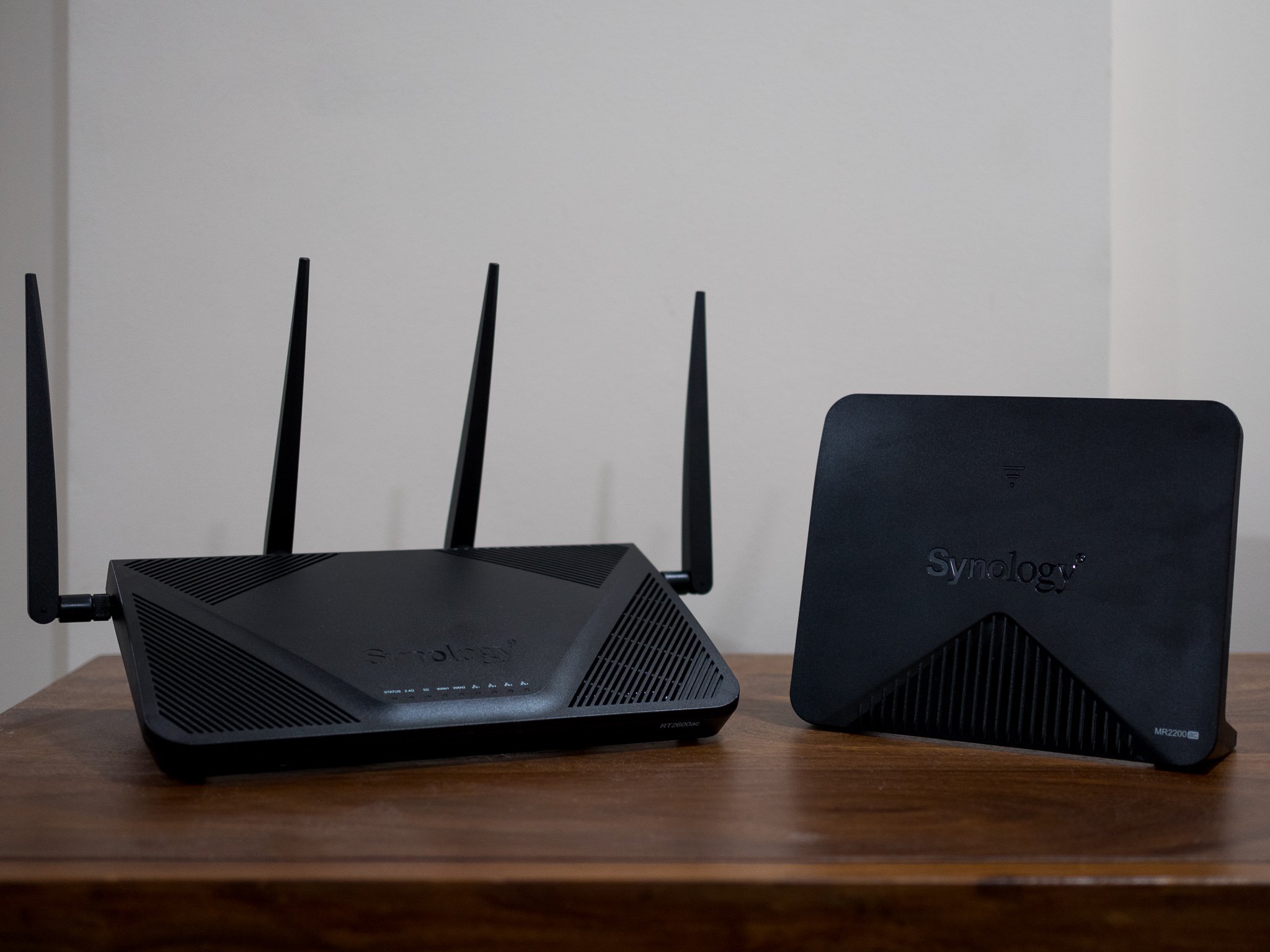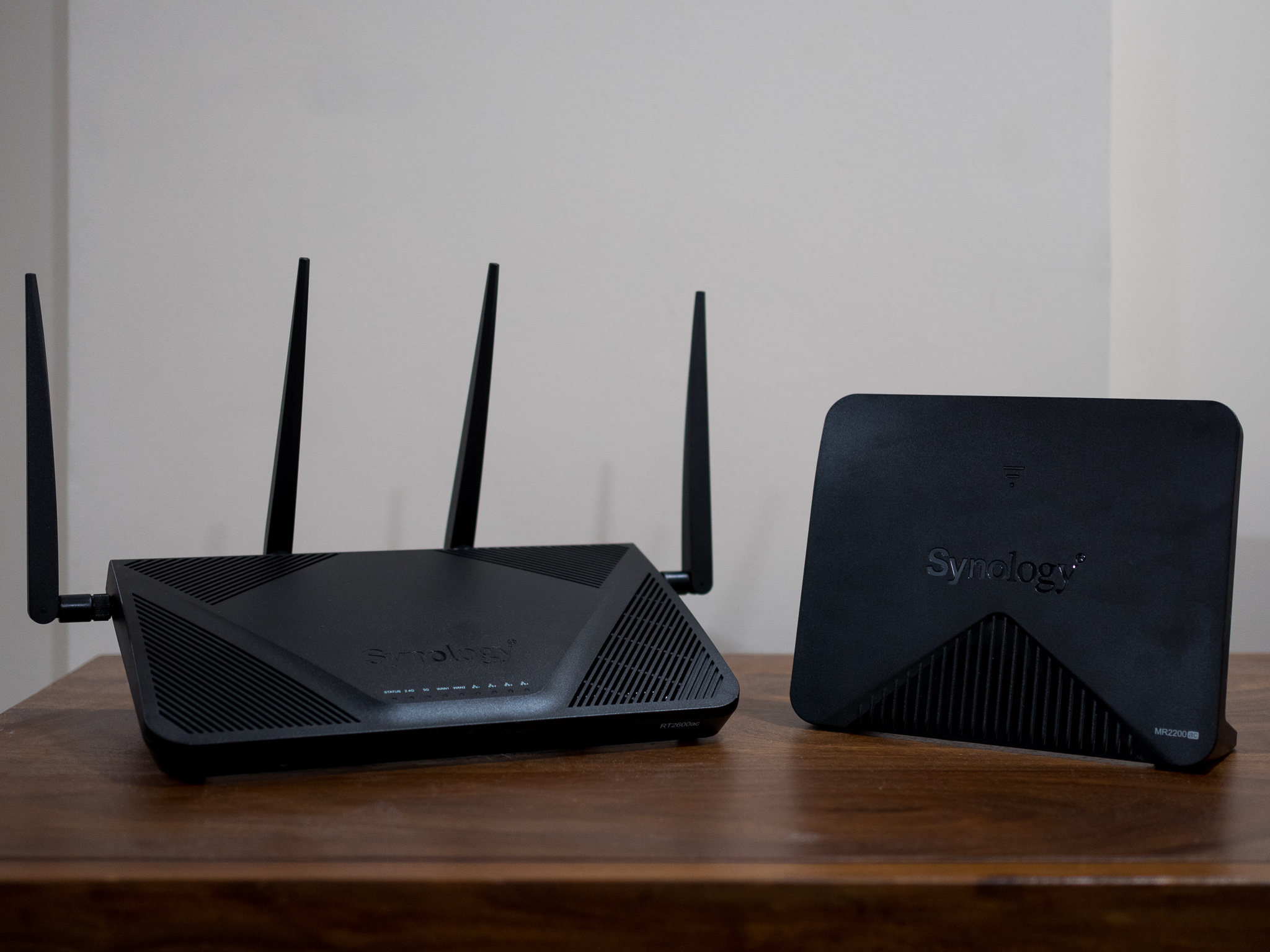
Synology made a name for itself over the last 10 years for its NAS enclosures, and in recent years the Taiwanese manufacturer has branched out into home networking. The RT1900ac was the first router from the brand, incorporating many of the software-driven features that make Synology products stand out.
Synology built on that with the RT2600ac, a dual-band router with a similar web-based operating system that made Synology's NAS products stand out. The RT2600ac debuted back in 2017, but it picked up a major update last year, allowing it to work as a mesh system. The update coincided with the launch of the MR2200ac, Synology's first take on a dedicated mesh networking solution.
The RT2600ac on its own costs $199, with the MR2200ac retailing for $140. Synology is bundling both as a mesh networking solution for $305, bringing it in line with other products in this space. I've been using the RT2600ac and MR2200ac in a mesh configuration for over a month, with the former as the base station and the latter as a satellite. Here's what you need to know about Synology's foray into the world of mesh networking.
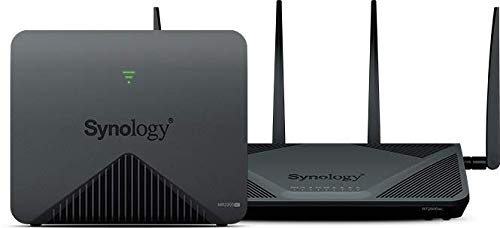
Synology's mesh networking solution is a fantastic way to get whole-home Wi-Fi coverage, with the sheer number of features on offer making it one of the most robust options available in this space.
Pros
- Excellent wireless throughput
- Versatile web-based software
- Easy to set up
- Highly configurable
- Works as a NAS
Cons
- Costly
Synology RT2600ac + MR2200ac Hardware
| Category | RT2600ac | MR2200ac |
|---|---|---|
| Performance | 2,533 Mbps800 Mbps on 2.4GHz1,733 Mbps on 5GHz | 2,134 Mbps400 Mbps on 2.4GHz867 Mbps on 5GHz-1867 Mbps on 5GHz-2 |
| Chipset | 1.7GHz dual-core Qualcomm IPQ8065 | 717MHz quad-core Qualcomm IPQ4019 |
| RAM | 512MB DDR3 | 256MB DDR3 |
| Flash memory | 4GB/8MB | 4GB/8MB |
| Wireless standard | 4x4 Wave-2 802.11ac | 2x2 Wave-2 802.11ac |
| Ethernet | 4 x GigabitDual WAN | 2 x Gigabit |
| Ports | 1 x USB 3.0, 1 x USB 2.0SD card slot | 1 x USB 3.0 |
| Antennae | Four (external) | Two (internal) |
Synology RT2600ac + MR2200ac Design and features
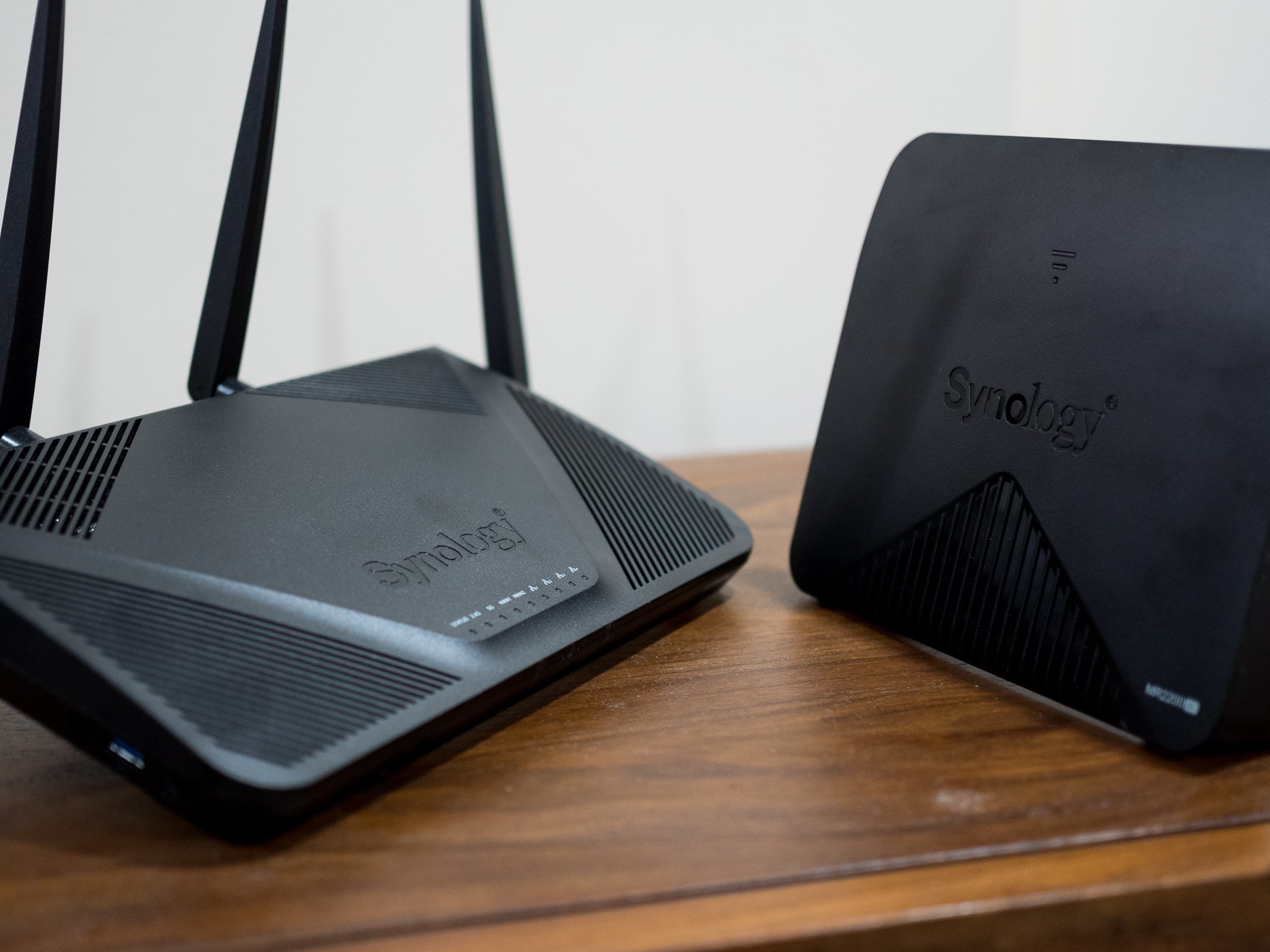
The home networking space hasn't seen a lot of design changes in the last 10 years, but with mesh routers, manufacturers have started to add a bit of flair to make the devices stand out. Google Wifi, for instance, looks pretty distinctive with its white aesthetic, and AmpliFi's mesh solution stands out thanks to a cube design for the primary router.
Synology, however, is sticking to a traditional form factor with the RT2600ac and MR2200ac. The packaging itself is minimal, with both routers encased in a brown box with a label detailing the model number and a few features. The RT2600ac has a plastic chassis with a matte finish, with four antennae and two elevated legs at the back. The front is ventilated for better airflow to the internals and features the status LEDs and a full-sized SD card slot. On the right edge, you have the WPS and Wi-Fi buttons, and the left has a USB 3.0 port.
Round the back, you have four Gigabit Ethernet ports along with a Gigabit WAN port, a USB 2.0 port, and the power and reset buttons. The first LAN port doubles up as a WAN2 port, allowing you to use two broadband connections at the same time.
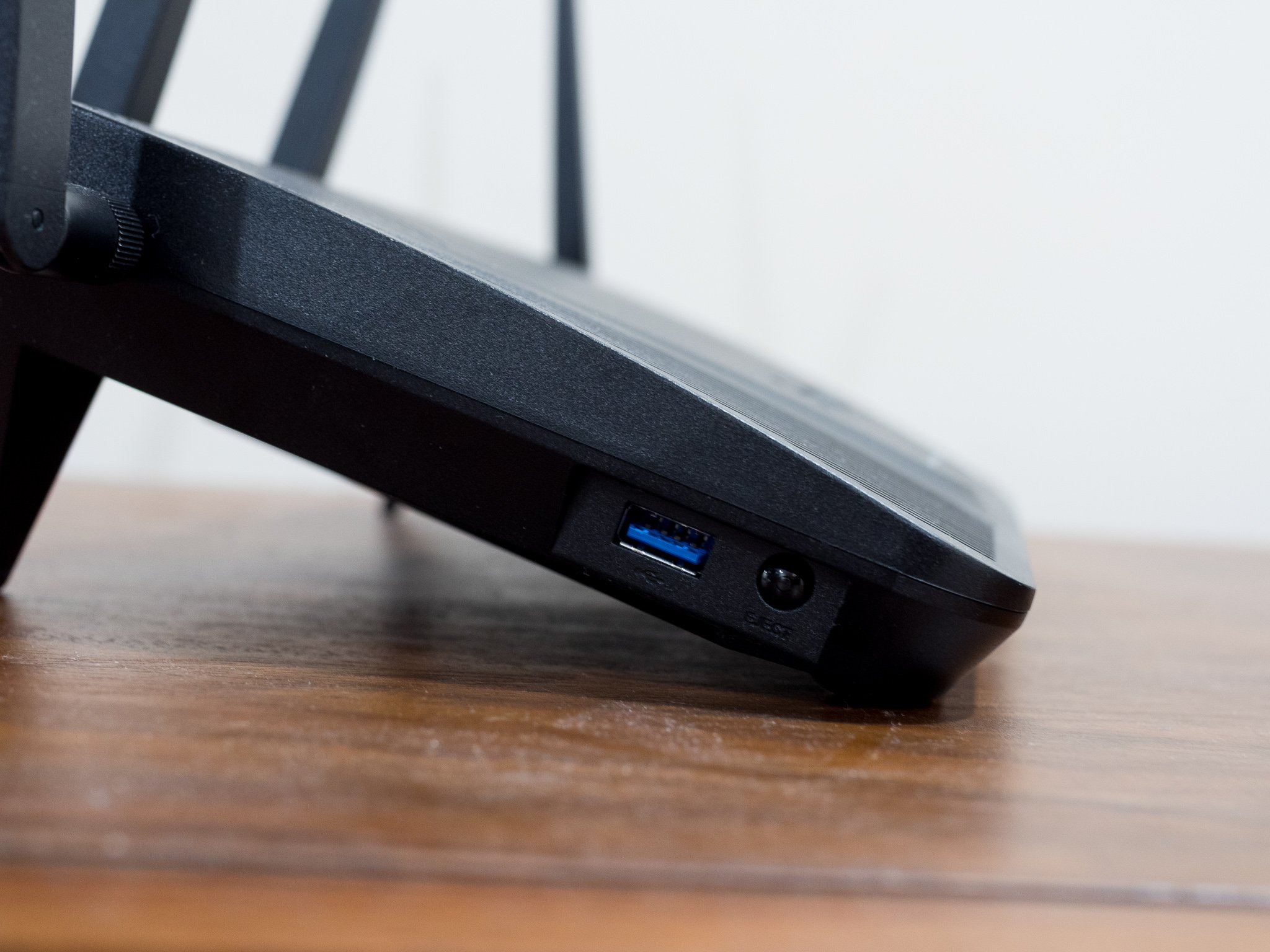
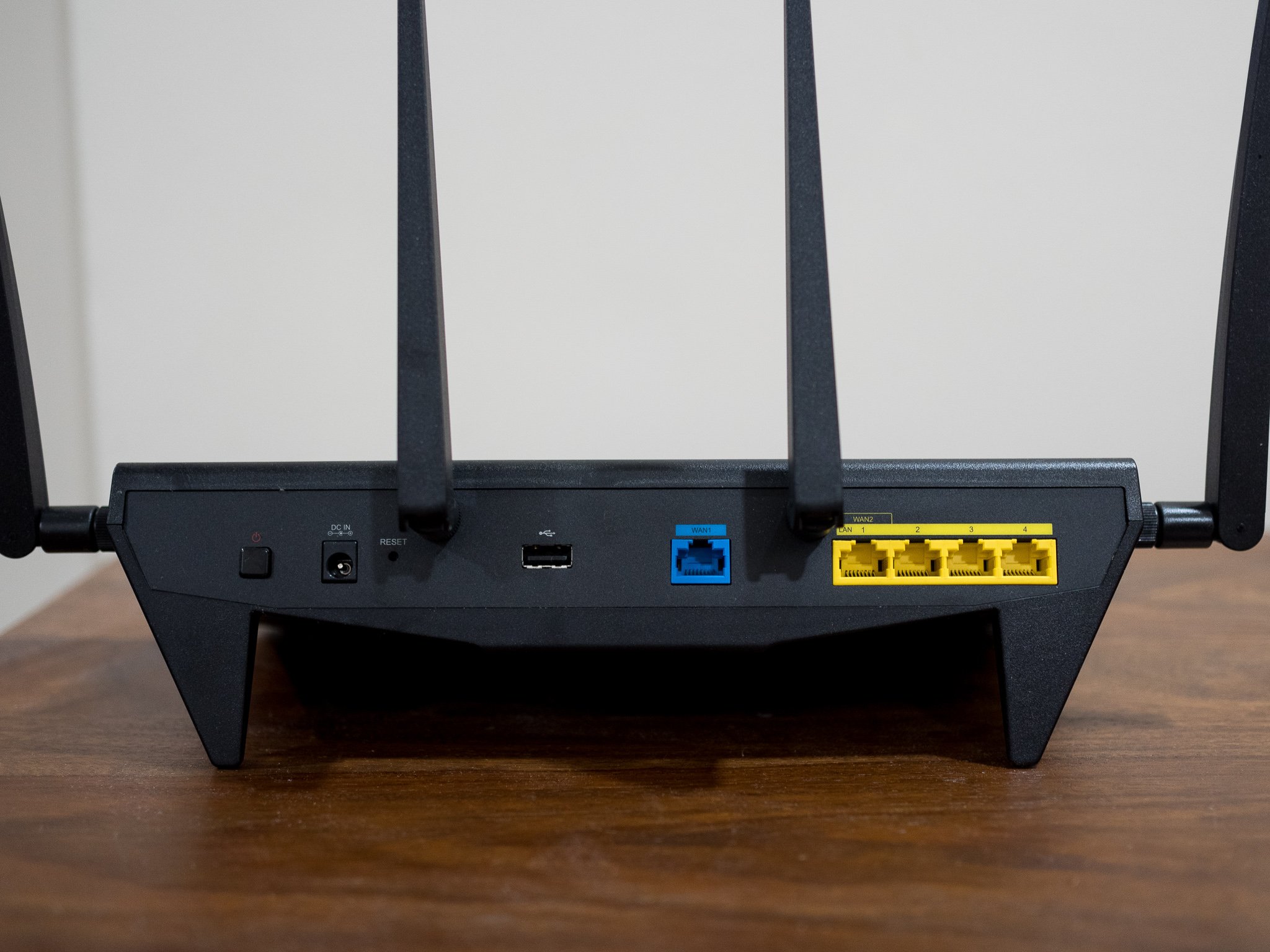
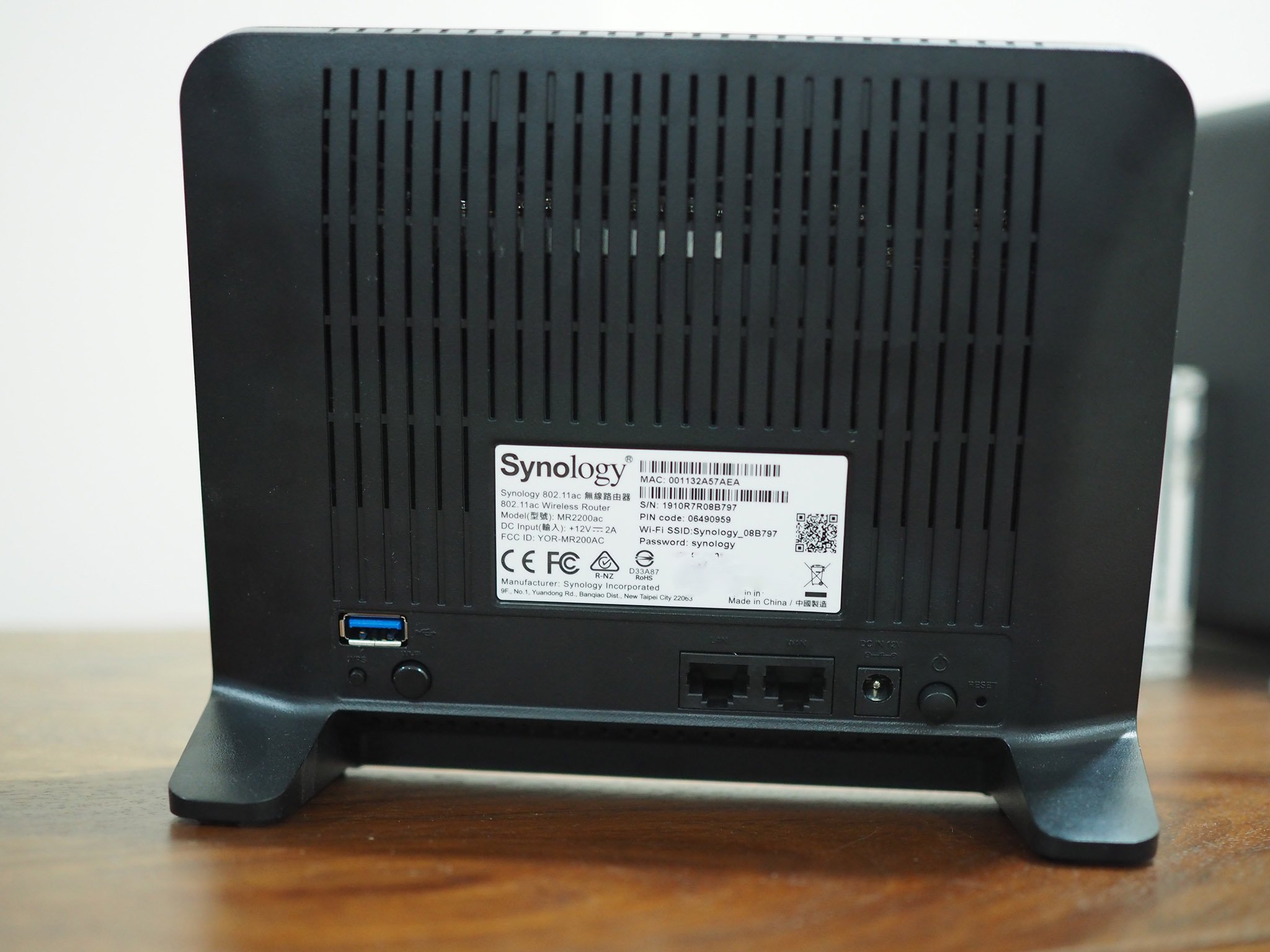
The MR2200ac, meanwhile, has a much more minimalist design that looks modern. It has a vertical design with ventilation at the front, and a single Wi-Fi LED at the top to indicate connection status. As it is vertically oriented, the two antennae are located internally. There's a single WAN port as well as an Ethernet port, along with USB 3.0 at the back.
You can use either router as a standalone unit, with the MR2200ac a great option for smaller homes.
The RT2600ac is a dual-band router and the MR2200ac has three bands, and when used as a node, the third band on the MR200ac acts as a wireless backhaul to the RT2600ac. If you don't want to rely on a wireless backhaul, the MR2200ac also has an Ethernet port at the back, allowing you to set up a wired backhaul to the RT2600ac. A wireless backhaul is obviously more convenient as you don't need to drag an Ethernet cable to each node, and I didn't see any significant loss in throughput.
Unlike most mesh systems, you can use either router here as a standalone unit. The MR2200ac works just fine on its own, making it a great option if you have a smaller home. But when paired with the RT2600ac as a node, you get coverage that's comparable to a three-node mesh router system like the Google Wifi. While the MR2200ac works as both a primary router or a satellite, the RT2600ac only works as a primary router — so if you're looking to build a mesh network out of Synology routers, you'll have to use the RT2600ac as the primary and add MR2200ac nodes as needed. You can also use one MR2200ac as the base station and add more units as needed to set up a tri-band mesh system.
There's a lot to like here, but Synology's web-based router OS is leagues ahead of everyone else.
The main differentiator for Synology's NAS enclosures is DiskStation Manager, the web-based operating system that comes with a smorgasbord of features designed to expand what the NAS is capable of. So when Synology started off with home networking, it introduced a similar feature-driven OS called Synology Router Manager (SRM).
Most routers these days offer a robust web management utility that lets you customize every facet of the router, but SRM goes above and beyond anything else in the market today. With SRM, you can just hook up an external hard drive to the RT2600ac or the MR2200ac via the USB port and turn either router into a full-fledged NAS. That is a big deal, particularly when you consider that the MR2200ac on its own costs just $140.
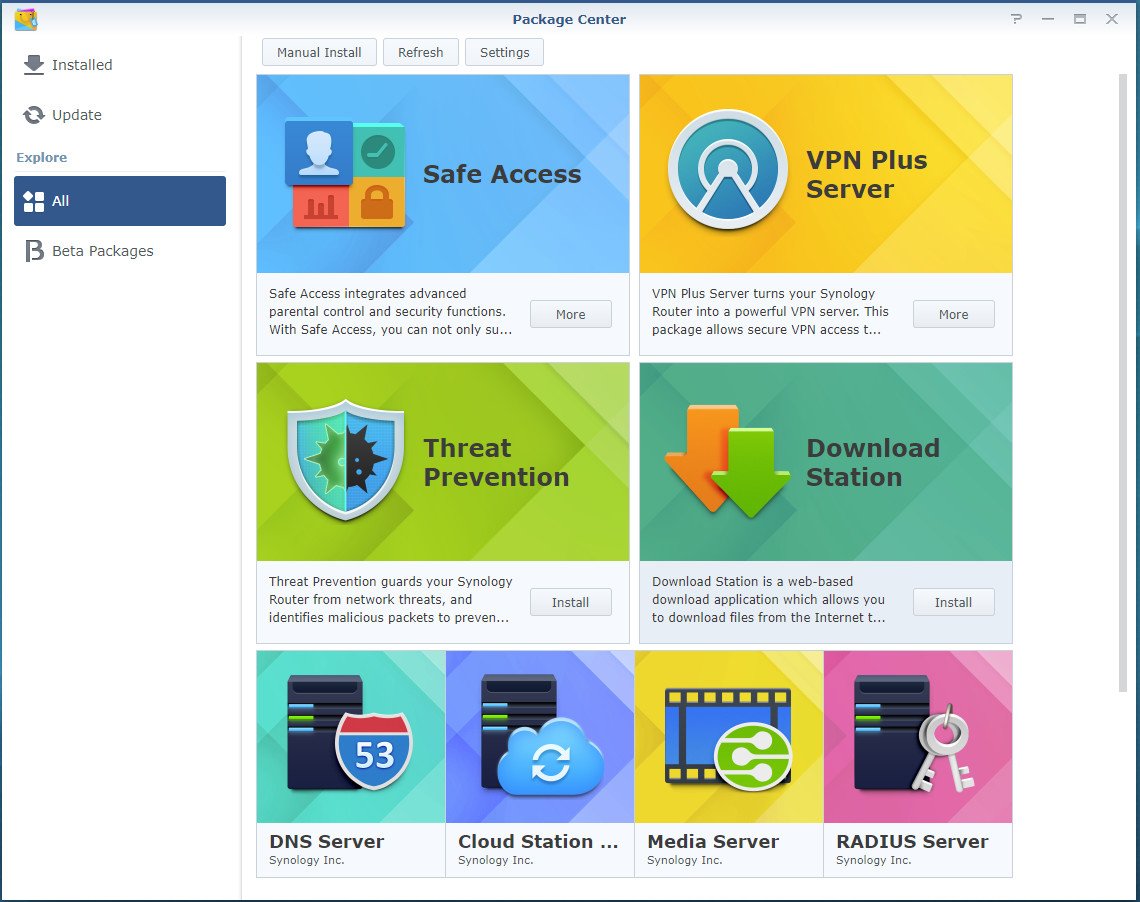
You'll also be able to install packages to add new features to the router. Package Center lists all available packages, and while there aren't as many utilities as you get with DSM, there's a lot of useful features on offer. Of particular interest is VPN Plus, which lets you run a VPN server straight from the router. Similarly, you can set up a custom DNS server on either router.
One of the best features in SRM is the ability to turn either router into a NAS. All you need to do is hook up an external hard drive, and configure Synology's Media Server package, letting you stream content over UPnP or DLNA to devices in your home network.
Synology RT2600ac + MR2200ac Setup

Setting up the RT2600ac and MR2200ac is about as straightforward as it gets. I'm using the RT2600ac as the base station and the MR2200ac as the satellite, so I set up the RT2600ac first by heading to router.synology.com. Synology also has an Android app dubbed DS Router that lets you set up either router.
You'll be able to configure the SSID and set up a password for both the Wi-Fi network and SRM, and key in your WAN details. Once you're done setting up the router, you'll see the dashboard for SRM. You can set up a Synology account if you want to remotely manage the router from outside your home network.
Once you log into SRM, you can configure additional SSIDs and see the devices that are connected to either router in real-time. You can also set up a guest network by heading to Wi-Fi Connect, and view the status of the network from Network Center.
Synology RT2600ac + MR2200ac Performance
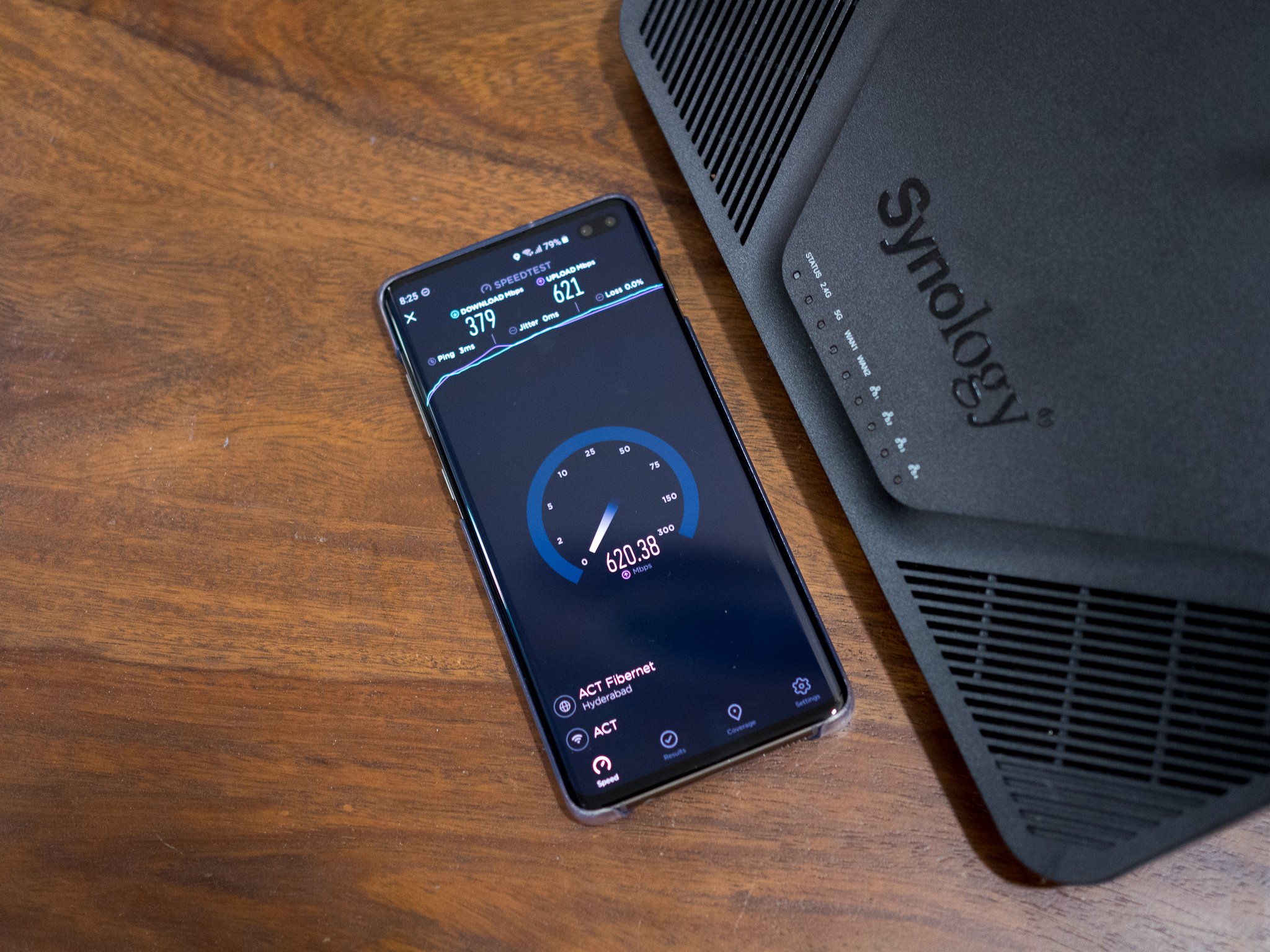
Over the last two years, I've used the ASUS RT-AC5300 for wireless connectivity. The router has eight antennae, three wireless bands, and a total bandwidth of 5.3 Gbps. Obviously, you're not going to see anywhere close to that in real-world usage scenarios, but it does a decent enough job.
I have a Gigabit plan that gives me 1,024 Mbps down and 1,024 Mbps up, but I never get those speeds over Wi-Fi. My main machine is hooked up to the router over an Ethernet cable, but on the other 15 or so devices that are constantly connected to the router, the bandwidth varies anywhere from 400 Mbps to 150 Mbps based on the location. I'm including the figures from the RT-AC5300 as a baseline, and we'll build on that with the RT2600ac. I used Speedtest.net on a Galaxy S10+ for the tests — the device has 2x2 MIMO and a Wi-Fi ax modem, so it's the ideal device for testing Wi-Fi throughput.
ASUS RT-AC5300 (2.4GHz)
| Location | Ping | Down speed | Up speed |
|---|---|---|---|
| Living room (10 feet) | 3 ms | 106 Mbps | 140 Mbps |
| Kitchen (50 feet) | 3 ms | 92 Mbps | 105 Mbps |
| Bedroom (75 feet) | 3 ms | 84 Mbps | 78 Mbps |
ASUS RT-AC5300 (5GHz)
| Location | Ping | Down speed | Up speed |
|---|---|---|---|
| Living room (10 feet) | 3 ms | 379 Mbps | 621 Mbps |
| Kitchen (50 feet) | 3 ms | 238 Mbps | 141 Mbps |
| Bedroom (75 feet) | 4 ms | 148 Mbps | 121 Mbps |
As you can make out from the figures above, there's a noticeable decline after the 50-feet mark. The 5GHz channel delivers more bandwidth but at a shorter range, and this is where a mesh network makes a huge difference. It also doesn't help that the Wi-Fi signal has to pass through two brick walls to get to my bedroom. Let's see how the RT2600ac fares in this regard.
Synology RT2600ac (2.4GHz)
| Location | Ping | Down speed | Up speed |
|---|---|---|---|
| Living room (10 feet) | 2 ms | 118 Mbps | 137 Mbps |
| Kitchen (50 feet) | 3 ms | 84 Mbps | 58 Mbps |
| Bedroom (75 feet) | 3 ms | 62 Mbps | 51 Mbps |
Synology RT2600ac (5GHz)
| Location | Ping | Down speed | Up speed |
|---|---|---|---|
| Living room (10 feet) | 3 ms | 402 Mbps | 385 Mbps |
| Kitchen (50 feet) | 5 ms | 144 Mbps | 201 Mbps |
| Bedroom (75 feet) | 5 ms | 132 Mbps | 96 Mbps |
The RT2600ac does a great job on its own, but the throughput declines once you cross the 40-feet range. That said, it is a solid showing for a Wi-Fi AC2600 class router.
Synology MR2200ac (2.4GHz)
| Location | Ping | Down speed | Up speed |
|---|---|---|---|
| Living room (10 feet) | 3 ms | 83 Mbps | 119 Mbps |
| Kitchen (50 feet) | 5 ms | 71 Mbps | 32 Mbps |
| Bedroom (75 feet) | 5 ms | 67 Mbps | 21 Mbps |
Synology MR2200ac (5GHz)
| Location | Ping | Down speed | Up speed |
|---|---|---|---|
| Living room (10 feet) | 3 ms | 340 Mbps | 397 Mbps |
| Kitchen (50 feet) | 3 ms | 110 Mbps | 48 Mbps |
| Bedroom (75 feet) | 5 ms | 123 Mbps | 45 Mbps |
The MR2200ac works as a standalone unit, and it does a pretty decent job at close range. But throughput takes a hit once you go over 30 feet. But when you consider the fact that the router costs less than half that of the RT2600ac, you see just how great value it is in this segment.
The main downside with using the MR2200ac as a standalone router is the single Ethernet port at the back. You'll ideally need to buy a network switch if you're planning on connecting other devices to the router over Ethernet. I usually have a Hue hub, Harmony hub, a DS918+ NAS, and a few security cameras that connect to the router via a Netgear GS110TP switch, so while the single Ethernet port wasn't an issue for me, it is a factor if you're considering the MR2200ac as a base station.
Synology RT2600ac + MR2200ac (Smart Connect)
| Location | Ping | Down speed | Up speed |
|---|---|---|---|
| Bedroom (15 feet) | 3 ms | 337 Mbps | 284 Mbps |
| Kitchen (30 feet) | 5 ms | 210 Mbps | 148 Mbps |
| Guest bedroom (50 feet) | 6 ms | 74 Mbps | 56 Mbps |
Synology relies on algorithms to automatically switch bands and routers, ensuring you get a reliable signal wherever you are in the house. I put the MR2200ac satellite in front of my bedroom, and it instantly provided a boost in the available throughput. As noted above, the 5GHz band on the MR2200ac isn't particularly great at long-range, but based on the positioning of the node, you should get decent speeds throughout your house. The bandwidth figures listed above are over the wireless backhaul.
Should you buy the Synology RT2600ac + MR2200ac?
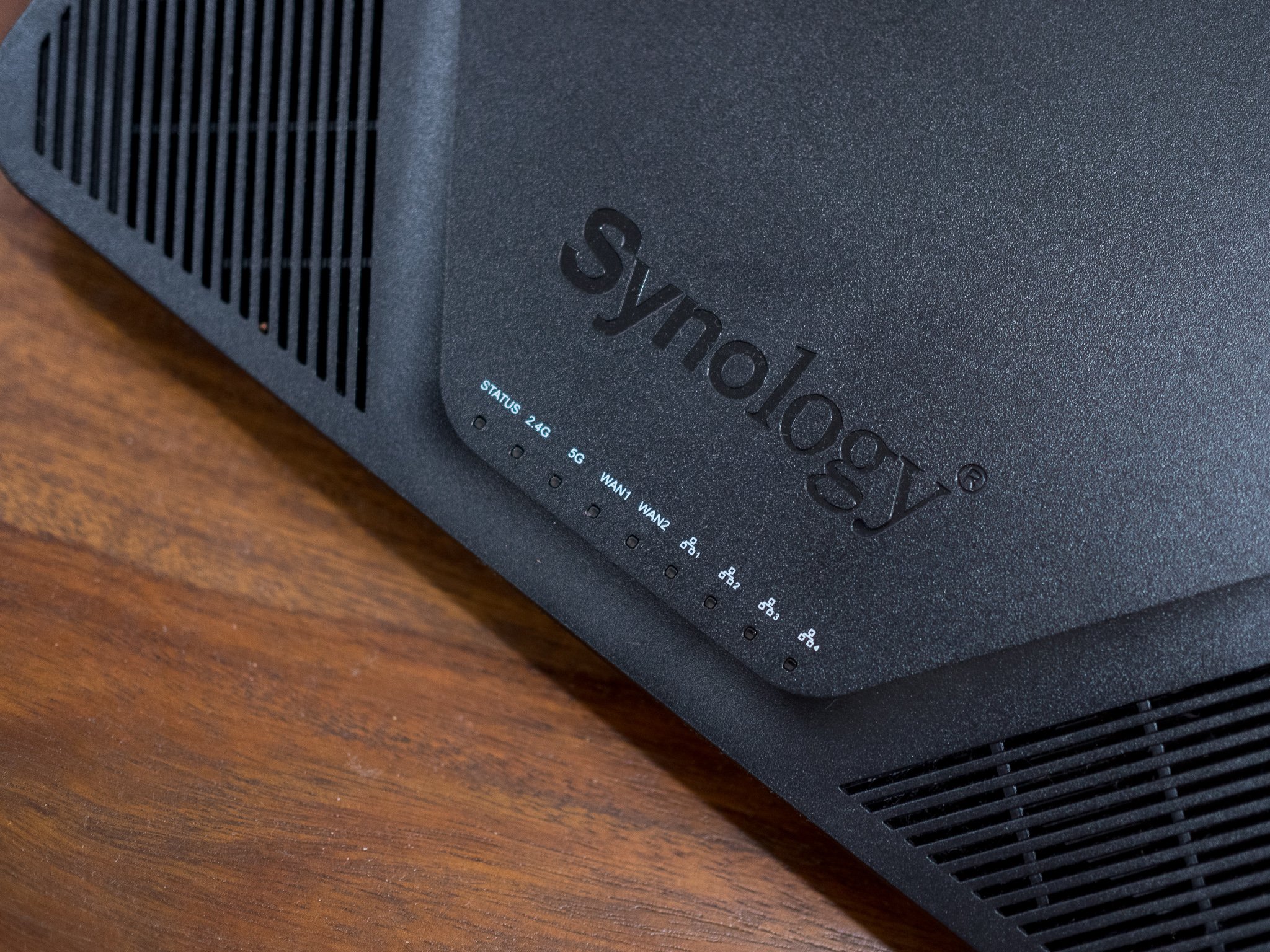
Overall, Synology's mesh networking solution has a lot going for it. Both the RT2600ac and MR2200ac offer robust connectivity on their own, and when connected as a mesh system they do a fantastic job extending the range of your existing home network. I haven't really switched to a mesh network thus far as the router I've been using has rock-solid connectivity throughout my house, but using the RT2600ac in conjunction with the MR2200ac for a month has shown that Synology's solution is a viable alternative.
The extensibility of a mesh system combined with the sheer number of features on offer with SRM make Synology's RT2600 and MR2200 a great choice if you're looking to get started with mesh networking. You not only get a great router system that provides excellent whole-home Wi-Fi coverage, but you can also use it as a NAS just by plugging a hard drive.
With the RT2600ac + MR2200ac bundle retailing for $305, it is in line with what you'd pay for a similar system from Google, Linksys, or Eero. With Synology, you're getting much more robust firmware that gives you granular control over the hardware, and a versatile OS that lets you add new features.

Harish Jonnalagadda is a Senior Editor overseeing Asia for Android Central, Windows Central's sister site. When not reviewing phones, he's testing PC hardware, including video cards, motherboards, gaming accessories, and keyboards.
